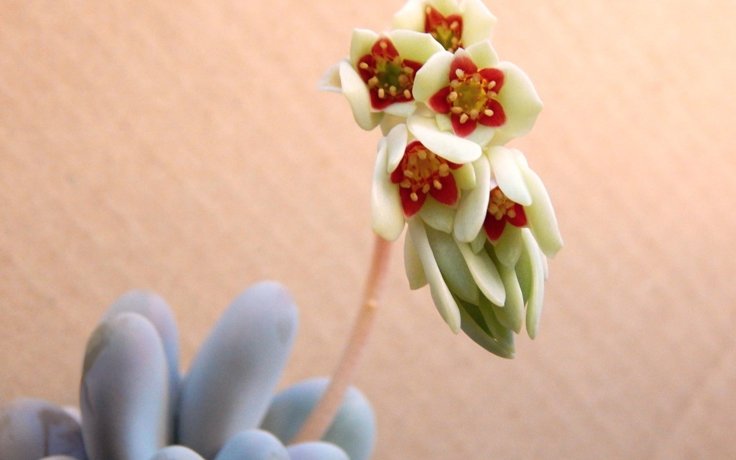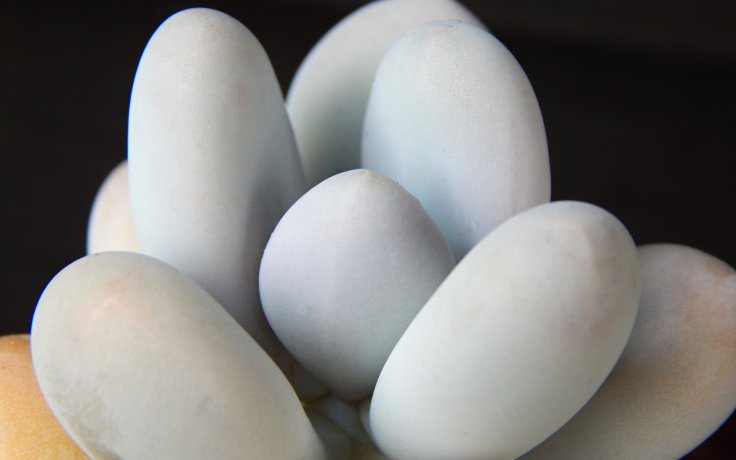- Home
- Succulents
- Pachyphytum
- Pachyphytum oviferum





Pachyphytum oviferum
Place the succulent in full sun. It does not mind partial shade.
Water approximately every week after drying out. Reduce watering during the winter.
The plant prefers room temperature, with a long-term minimum of about 5 °C. It tolerates high temperatures very well. It is not a hardy plant.
This plant has been found in only one place in the world, a rocky site at 1 200 m above sea level in the Mexican state of San Luis Potosí. It's found nowhere else in the wild.
For its unusual appearance, colour and leaf shape it is often called Moonstones. The species name of the plant (i.e. oviferum) accurately describes the ovoid shape of the leaves. These are covered by a thick waxy layer, which causes their specific colouring and leathering. The colours range from blue-white to blue-green to blue-violet. They take on a purple tinge especially in mid-summer. The leaves grow up to 5 cm long.
Pachyphytum grow upright at first, later succumbing to their own weight and lying down. At first they grow solitary but over time they form multiple stems. This phenomenon occurs especially after flowering. The stems grow up to 20 cm tall.
The bell-shaped flowers are a very distinctive feature of this plant. The creamy petals are beautifully complemented by the red to purple inner rosettes. The showy flowers shine on a stalk up to 30 cm long. They begin to bloom in late autumn but do not fully develop until late February/March.
Older leaves gradually fall off. The succulent can be rejuvenated by cutting just above the lower leaves of the rosette, which will improve the overall aesthetic impression. The plant can be propagated from individual leaves, and occasionally an accidental fallen leaf will root directly in the substrate. I can recommend this plant especially to those who want to enliven their collection with beautifully flowering as well as unusual looking pieces.